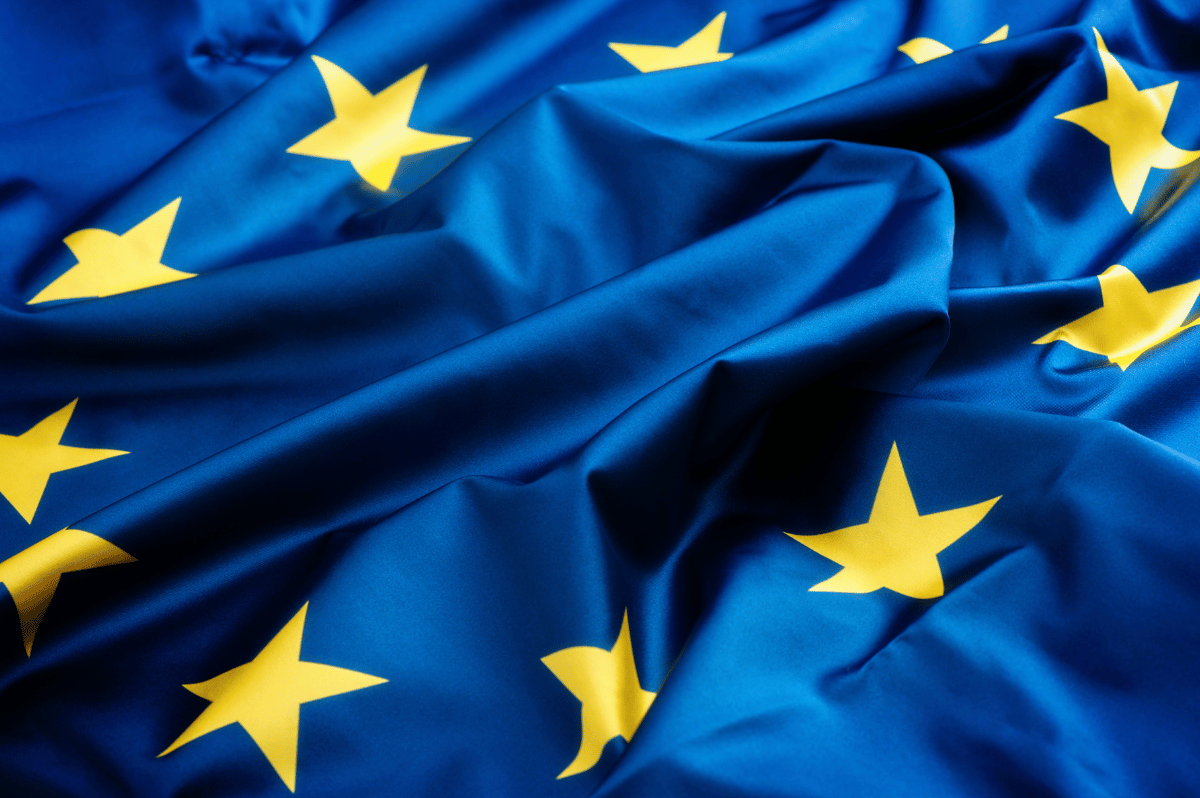The NIS2 Directive & Its Impact on Cybersecurity Across the E.U.

In response to an endless barrage of cyber-attacks targeting private, public and state-sponsored organizations across the European Union (E.U.), there has been a call to widen the scope of risk management requirements and to increase accountability with regards to security supervisory measures. As such, the E.U. has taken a decisive step forward with the introduction of the NIS2 Directive. This directive, which seeks to supersede its predecessor (NIS), aims to fortify the cybersecurity posture of organizations across the continent, ensuring that the digital infrastructure remains resilient against a backdrop of evolving threats. The NIS2 Directive aims to strengthen the security requirements, address the security of supply chains, streamline reporting obligations, and introduce more stringent supervisory measures and stricter enforcement. As we navigate through this comprehensive guideline, let’s delve into the essence of NIS2, its enforcement mechanisms, and what it signifies for organizations striving for excellence in cybersecurity.
Unveiling the NIS2 Directive: A Beacon of Cyber Resilience
The NIS2 Directive emerges as a landmark legislative endeavor by the European Union, setting a new horizon for cybersecurity norms across its member states. Recognizing the pivotal role of digital infrastructure in the contemporary socio-economic landscape, this directive not only aims to rectify the vulnerabilities identified in its predecessor but also endeavors to architect a robust cybersecurity framework capable of withstanding the ever-evolving cyber threats. By mandating an elevated baseline of security measures, NIS2 embodies the EU’s commitment to safeguarding its digital ecosystem against the backdrop of increasing cyber adversities.
This legislative framework is distinguished by its ambitious scope, encapsulating a diverse spectrum of sectors deemed critical for the EU’s functionality and prosperity. From energy and transport to banking and healthcare, NIS2 acknowledges the interconnected nature of these sectors and the paramount importance of their security in ensuring the seamless operation of the Union’s digital and physical infrastructure. It’s this comprehensive inclusivity that marks a significant advancement from its predecessor, aiming to weave a tighter security net across the EU’s vast digital landscape.
Moreover, NIS2 accentuates the imperative of stringent compliance, embedding enhanced obligations for entities within its purview. These include the adoption of advanced risk management protocols, the establishment of incident reporting mechanisms, and the implementation of cutting-edge cybersecurity measures. Through these provisions, NIS2 propels organizations towards not merely reacting to cyber incidents but fostering a proactive culture of cyber resilience, thereby elevating the cybersecurity stature of the European Union to new heights.
The Expanded Scope and Enhanced Obligations Under NIS2
The inception of the NIS2 Directive ushers in an era of elevated cybersecurity expectations, broadening its dominion to envelop an array of critical sectors and digital service providers. This strategic expansion reflects the European Union’s acute awareness of the ubiquitous nature of cyber threats and underscores a resolute commitment to fortifying every facet of its digital and physical infrastructures. The proposed expansion of the scope covered by NIS2 would effectively oblige more entities and sectors to take measures. The directive’s enhanced scope is not merely a quantitative increase but a qualitative leap forward, embodying a holistic approach to cybersecurity that acknowledges the intricate interdependencies within the EU’s socio-economic ecosystem.
With this expansion comes a suite of augmented obligations that entities must embrace. NIS2 mandates the implementation of rigorous risk management protocols, establishing a framework wherein proactive measures are not just encouraged but required. The essence of these obligations lies in their potential to transform reactive security postures into dynamic, anticipatory defenses, capable of not just withstanding but preempting cyber threats. This paradigm shift necessitates a comprehensive reevaluation of existing cybersecurity practices, pushing organizations to adopt not only advanced technologies but also to cultivate a culture of perpetual vigilance and resilience.
Incident reporting protocols, another cornerstone of the directive, serve a dual purpose: they ensure timely and effective responses to cyber incidents while fostering a climate of transparency and cooperation among EU members. This collective approach to cybersecurity is emblematic of the NIS2 Directive’s vision—a vision where collaborative effort and shared responsibility pave the way towards a secure and resilient digital Europe.
Enforcement Mechanisms and the Role of National Authorities
The NIS2 Directive’s ambitions for a cyber-resilient Europe are bolstered by a comprehensive enforcement framework, meticulously designed to ensure unwavering adherence to its mandates. At the heart of this framework stand the National Authorities, designated as the vanguards of implementation and compliance within their territories. These authorities are vested with the power to enact a wide array of enforcement actions, signifying the European Union’s resolute stance on cybersecurity discipline.
Empowered to conduct thorough audits, these entities delve into the operational intricacies of organizations, assessing their compliance with the NIS2’s stringent requirements. Their purview extends beyond mere evaluation; they are authorized to request detailed information, compelling entities to demonstrate their commitment to cybersecurity resilience through tangible evidence. This level of scrutiny underscores the directive’s focus on transparency and accountability, ensuring that organizations are not just compliant in theory but in practice as well.
Should discrepancies or lapses in compliance be uncovered, National Authorities are equipped to impose penalties that reflect the severity of the infraction. Non-compliance with the NIS2 Directive can result in significant financial penalties. This enforcement mechanism serves a dual purpose: it acts as a deterrent against non-compliance and motivates entities to proactively bolster their cybersecurity measures. The clear message sent by this rigorous approach is that the European Union will tolerate no compromise on the security of its digital landscape. Through this dynamic interplay between National Authorities and organizations, the NIS2 Directive is transforming the fabric of cybersecurity across the continent, fostering an environment where resilience is not just encouraged, but mandated.

The Implications of NIS2 for Cybersecurity Product Selection and Budget Optimization
In light of the NIS2 Directive’s rigorous mandates, the landscape of cybersecurity product selection and budget management is undergoing a pivotal transformation. The directive’s comprehensive security requirements compel organizations to critically assess and elevate their cybersecurity toolkits. This shift necessitates a strategic alignment of cybersecurity solutions with the NIS2 standards, underscoring the importance of integrating advanced technologies and scalable solutions that not only bolster cyber defenses but also ensure seamless compliance.
The value of the EU cybersecurity market is estimated at more than €130 billion. The directive champions a proactive stance on cybersecurity, thereby influencing organizations to prioritize investments in solutions that offer not just immediate protection but long-term adaptability to the evolving cyber threat landscape. This includes leveraging automation and artificial intelligence to enhance threat detection and response, as well as adopting cloud-based services that provide flexibility and scalability. As a consequence, budget allocation strategies must evolve to accommodate these sophisticated solutions, balancing the need for compliance with the imperative to remain vigilant against future cyber threats.
Moreover, the selection of cybersecurity products must be guided by a holistic understanding of the organization’s unique risk profile and operational requirements. This approach ensures that investments are not only NIS2-compliant but are also efficacious in addressing specific vulnerabilities and enhancing the overall security posture. In essence, the NIS2 Directive serves as a catalyst for organizations to reevaluate and optimize their cybersecurity budget, encouraging a strategic investment in technologies that drive not only compliance but also comprehensive cyber resilience.
The Role of Visionary Leadership in NIS2 Compliance
In the landscape shaped by the NIS2 Directive, the mantle of leadership carries with it an imperative to see beyond the horizon of current cybersecurity challenges. Visionary leaders stand at the vanguard of this new era, charged not only with navigating the complexities of compliance but also with cultivating an organizational ethos that prioritizes resilience and adaptability in the face of cyber threats. It is a role that transcends traditional expectations, demanding a forward-thinking approach that integrates strategic foresight with actionable intelligence.
The essence of visionary leadership in the context of NIS2 compliance lies in the ability to harness the collective strength and ingenuity of an organization. It involves championing the cause of cybersecurity across all echelons, advocating for the resources and technologies that align with the directive’s rigorous standards. It means inspiring a culture where every member understands their role in safeguarding the digital domain, fostering an environment where proactive security measures are ingrained in the fabric of daily operations.
Furthermore, visionary leaders recognize the value of cross-functional collaboration as a cornerstone of effective cybersecurity strategy. They seek to break down silos, fostering an integrated approach that leverages diverse perspectives and expertise in pursuit of a common goal: a resilient and secure digital infrastructure. Through their guidance, organizations are poised not only to meet the mandates of the NIS2 Directive but to set a standard for cybersecurity excellence that resonates throughout the European Union and beyond.
In this evolving digital landscape, the role of visionary leadership is not just to comply but to inspire, transforming the challenges posed by NIS2 into opportunities for innovation, growth, and enduring cyber resilience.
The NIS2 Directive as a Catalyst for Transformative Change
The NIS2 Directive heralds a significant shift in the European Union’s approach to cybersecurity, marking a pivotal moment in the collective endeavor to shield our digital ecosystem from the ever-present shadow of cyber threats. Its enactment is not merely a regulatory adjustment but a profound call to action, urging organizations across the EU to elevate their cybersecurity protocols, refine their strategic priorities, and fundamentally transform their operational ethos towards enhanced digital resilience.
This transformative framework demands more than mere compliance; it invites entities to reimagine their cybersecurity landscapes, integrating cutting-edge technologies and forward-thinking practices that extend beyond the immediacy of threat mitigation. It underscores the imperative for a holistic, anticipatory approach to cyber defense, emphasizing the necessity of strategic foresight and adaptability in an era characterized by rapid technological evolution and increasingly sophisticated cyber adversaries.
As organizations navigate this new directive, the impetus to innovate, to cultivate robust cyber resilience, becomes a defining challenge—and opportunity. The journey toward NIS2 compliance catalyzes a comprehensive reassessment of cybersecurity postures, propelling entities to not only fortify their defenses but also to champion a culture of continuous improvement and collaborative vigilance.
In essence, the NIS2 Directive serves as a formidable lever for transformative change, shaping a future in which the European Union stands as a paragon of cyber resilience. It is a future where the collective commitment to cybersecurity transcends regulatory compliance, embedding itself in the very DNA of organizational strategy and culture, forging a path toward a secure, resilient digital Europe for generations to come.
Try Portnox Cloud for Free Today
Gain access to all of Portnox's powerful zero trust access control free capabilities for 30 days!





